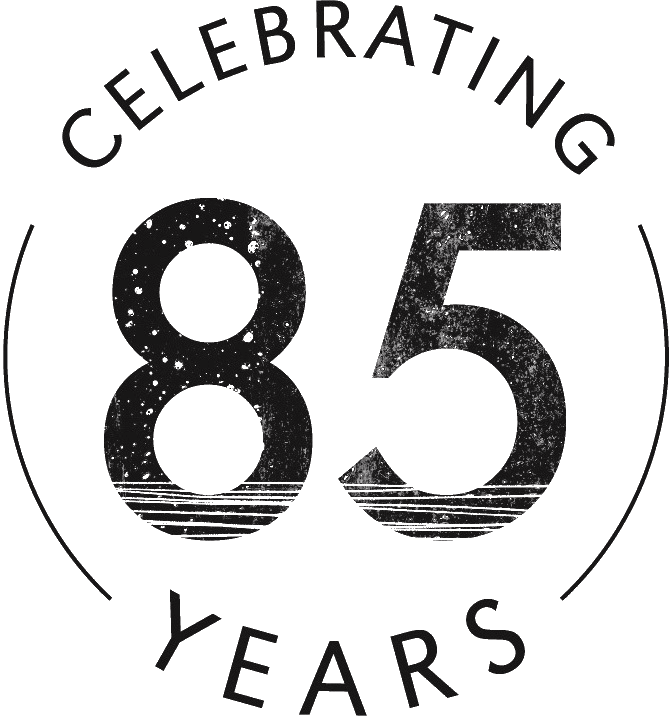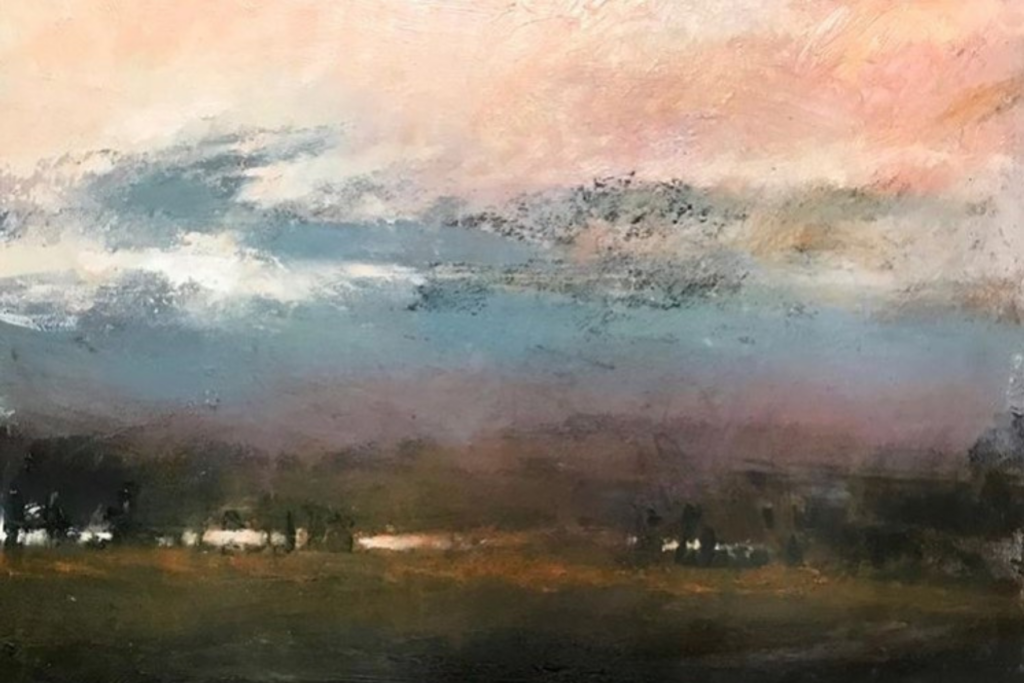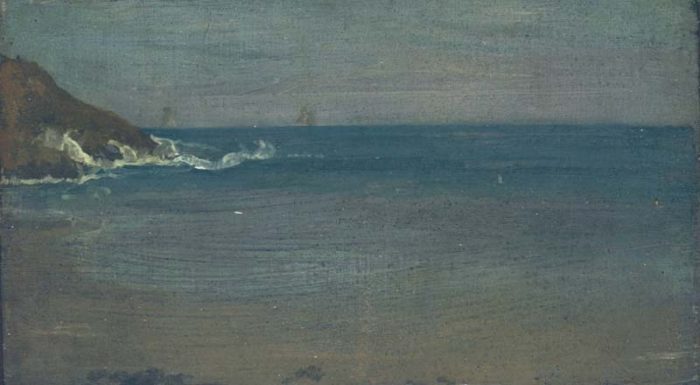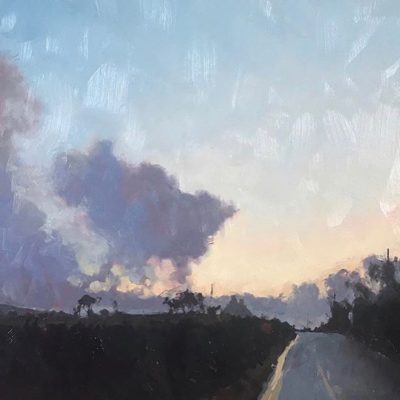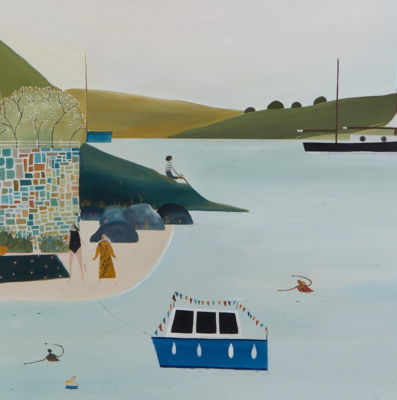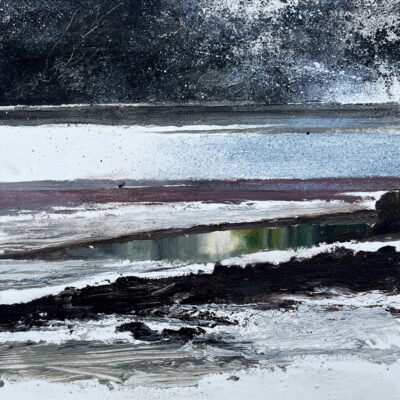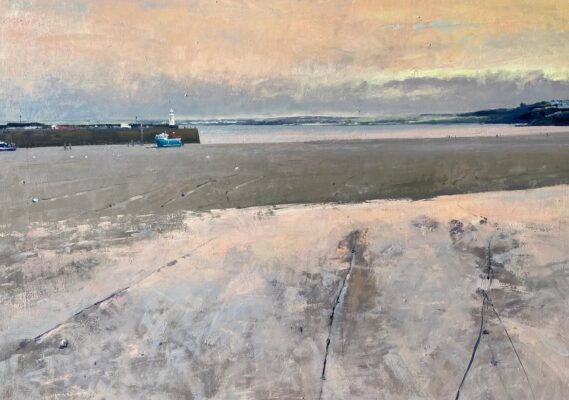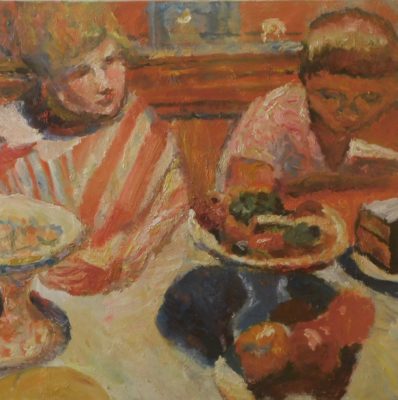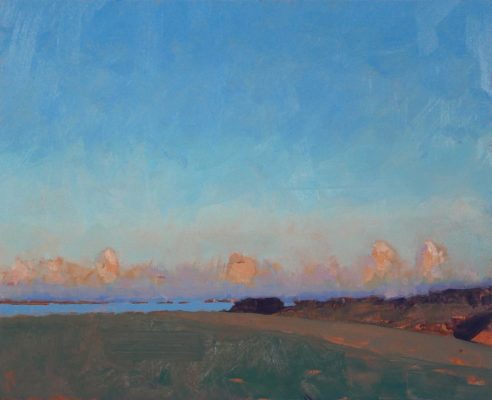Course details
Paint en plein air on the cliffs and beaches around St Ives and create intuitive expressions of landscape using oil paints and bars.
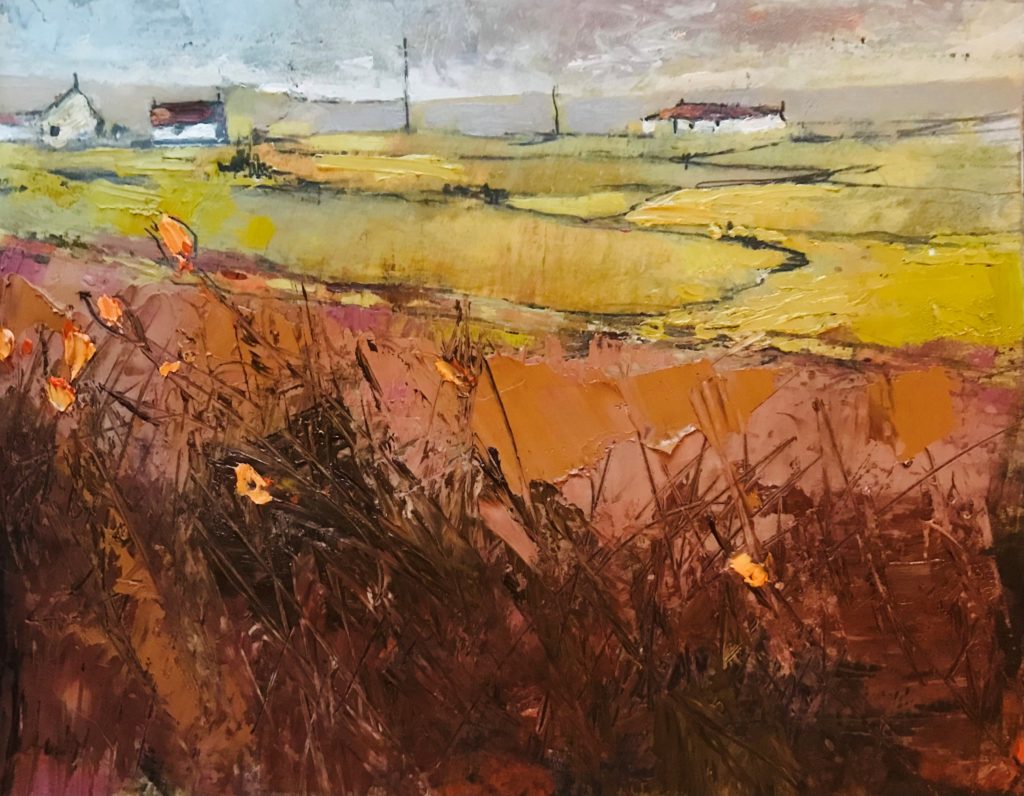
Inspired by expressive painting from artists, past and present in St Ives and beyond you will develop work both outside and back in the studio with brushes, knives and other tools to develop mark making. You will respond to your direct observation and studies to re invent a free and intuitive expression of landscape. This is a course open to all levels and ideal for those open to experimentation, interested in generating ideas and starting points. You will be moving away from representation towards abstraction and a sensory approach to painting and mark making.
There will be considerable time spent outdoors with walking on rough ground so you can capture the rugged landscape beyond the town and along the coast path. The weather can be challenging so come prepared with waterproofs and warm clothing. On the first day bring with you a packed lunch so you can make the most of your time outdoors.
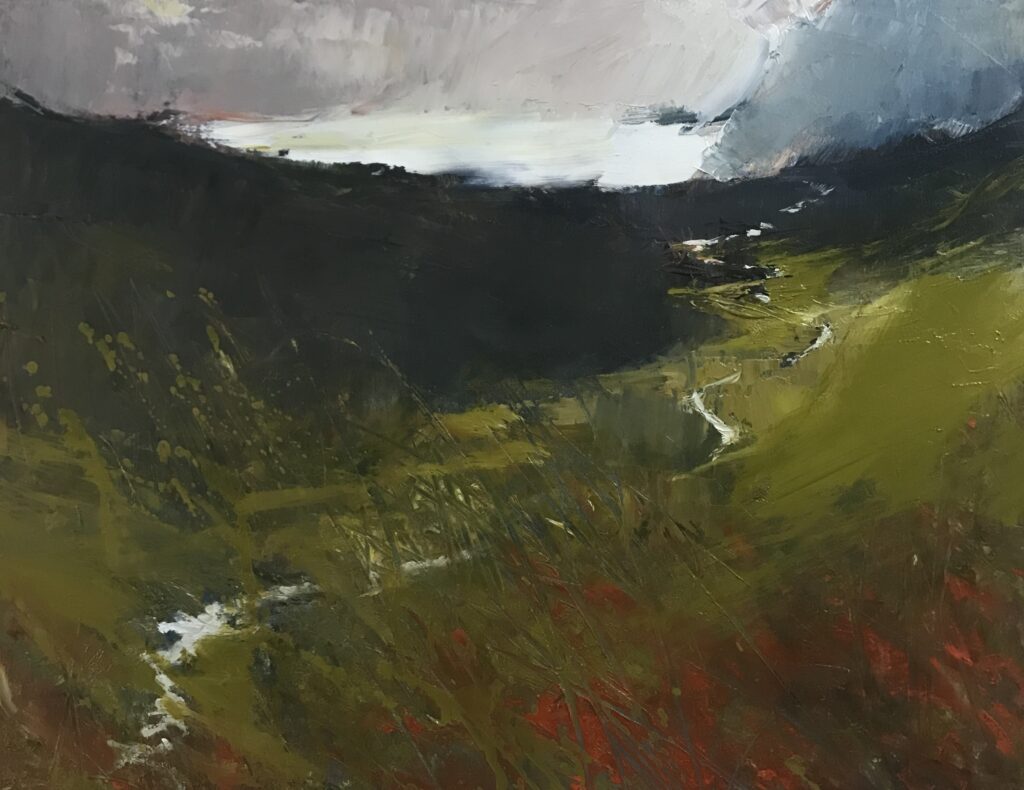

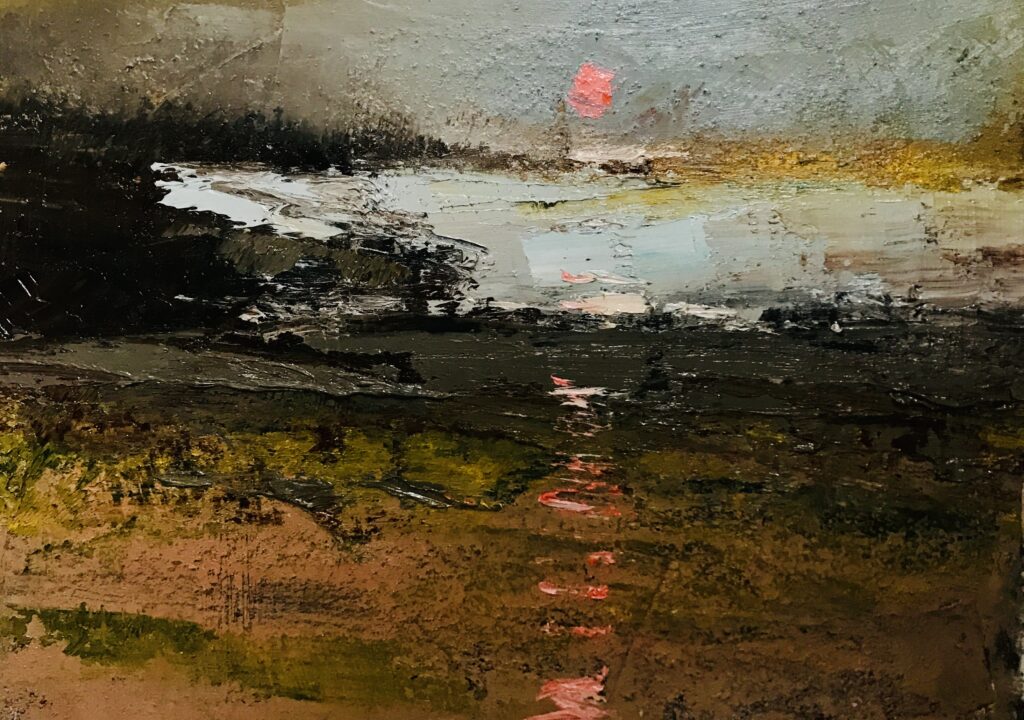
Day to day plan
This is a rough indication of what to expect over the course. However sometimes the structure of the days may alter depending on the nature of the group and weather.
Day 1
Following a brief introduction and discussion we will start off by looking at the working practice of artists Joan Eardley, Alfred Wallis and David Tress. Later, we will head out to the Island. This iconic part of St Ives will help us consider the landscape, the skyline and horizon working tonally, expressively and broadly, with a limited colour palette.
Day 2
Today, we will work a little larger, using oil paint on our coloured grounds. We will consider the working practice and imagery of Barbara Rae, who developed monoprints from her drawings. Following a demo you will try out monoprinting and monotype. After a drinks break, we will walk out to Clodgy Point. Working loosely, thin to thick paint with lots of quick studies.
Day 3
Our aim is to create loose, vigorous and expressive landscape painting in oils. The day will be spent on individual pieces, layering to create texture and depth, developed from our outside work.
Taught by
What to Bring
Our studios are fully equipped and we provide you with all the materials you need for your course. However, if you have a favourite set of brushes or any specialist materials that you would prefer to use, please bring them with you.
Timings and Breaks
The first day starts at 10am and finishes at 4.30pm, please aim to arrive ten to fifteen minutes before the start time.
All course days after that start at 9.30am and finish at 4pm and there will be an hour for lunch. There are plenty of nearby places to eat and we will serve tea and coffee at break times during the day.
What our students say
Jill was an excellent tutor. Very well run course, engaging and insightful. Thoroughly enjoyable and I learnt lots of new techniques.
Jill is a brilliant artist and a great teacher. I’m an untrained novice but this was so accessible and inspiring
I have attended many courses here and they have always been excellent. But this was superb. The tutor was so inspirational and I shall draw on her generous knowledge over and over again. Jill catered to a range of experiences and her style was so approachable.
The energy and patience of Jill, our tutor, was amazing and l am so pleased with the work she helped me create!
Jill is experienced and very knowledgeable. She packed the three days with flexible options, learning and experience. I am coming away energised and with new avenues to pursue and a range of approaches to experiment with. Jill was generous with her time and met each student’s process with encouragement and thoughtfulness. I think the course contained a vast amount more than one might expect on a three-day workshop.
The resources and the space to work in were excellent. The tutoring was wonderfully inspiring and supportive. I felt encouraged and supported all through and learnt new things
FAQs
Studio Courses
How can I get help in choosing a course?
Our friendly expert staff are always happy to discuss your needs and our courses in more detail to help you with your decision. Please call us on 01736 797180
How do I get my work home?
Tutors have special techniques for transporting oil paintings and the school has plastic folders available in our shop for £3.50 or do bring a portfolio.
For international students we are happy to arrange transportation of your work back home.
What do I need to bring?
Absolutely nothing! All materials and aprons are provided although some people do like to bring their own set of brushes.
What do I do for lunch?
Courses allow an hour’s break for lunch and there are numerous places nearby or you are welcome to bring a packed lunch into the studio.
What times do courses run?
Most of our courses start at 10am and end at 4.30pm on the first day. Subsequent days we start at 9.30am ending at 4pm.
Weekend Courses run 10am – 4pm on the first day but the final day starts at 9.30 and ends at 3.30 with a short lunch break to enable people to get home that evening.
Do you have to be experienced to come to the School?
The School is a very friendly and welcoming place for all ages and experience. Our drop-in life classes and August half-day workshops are ideal for those wanting to have a go for the first time. Most of our longer courses are also fine for novices.
If any of the courses do need a bit of experience we flag this up in the brochure and on the website.
Booking a Course
How can I reserve a place?
We will hold a provisional reservation for 24 hours if you give us a call whilst you find accommodation. Otherwise please book online or by telephone 01736 797180.
You can reserve a place with a £100 deposit; balance is due 12 weeks before course start date.
About St Ives
Where do I park?
The nearest long stay public car parks are the Island and Barnoon Long Stay Car Park, both a 5 minute walk away. In the peak summer months it may be easier to park at Trenwith Car Park by the leisure centre and walk down into town. If you don’t fancy the walk up the hill at the end of the day there is a shuttle bus which runs from outside the cinema.
How do I get there?
Public Transport: If you are coming from further afield the main train line runs into St Erth which is a 15 min taxi ride away or you can take the St Ives Bay Line which runs approx. every 30 minutes. The School is a 10 minute walk from St Ives station.
Driving: M5 will take you to Exeter where we recommend that you take the A30 across Bodmin Moor and into Cornwall. After passing Hayle, leave the A30 at St Erth roundabout for St Ives. Turn right at the second roundabout. This road will take you through Lelant and Carbis Bay into St Ives.
Where can I stay?
St Ives has a huge selection of hotels, guest houses and self catering accommodation to choose from. Please browse the art holidays St Ives section on our website and give us a call if you would like any help.
